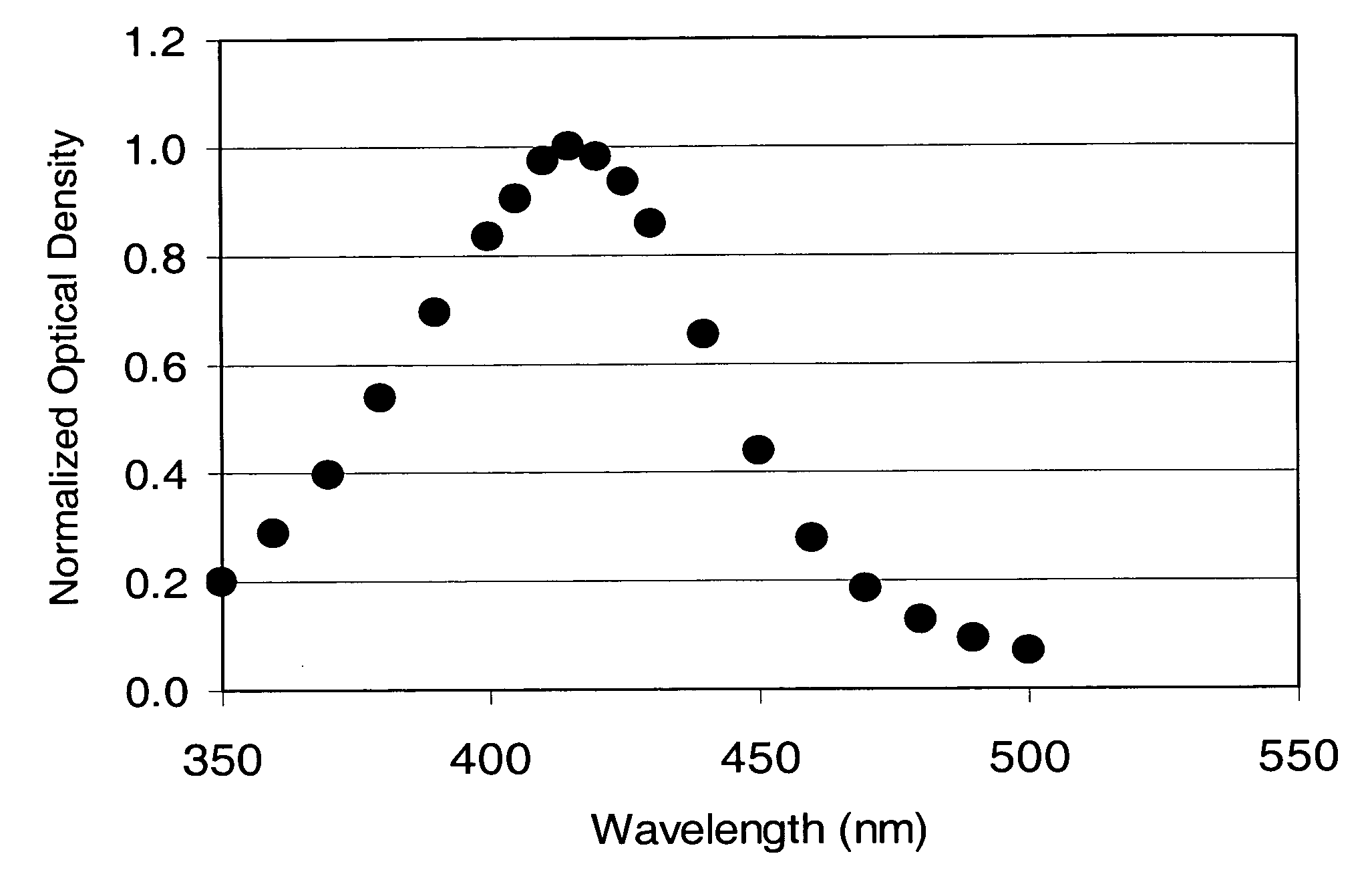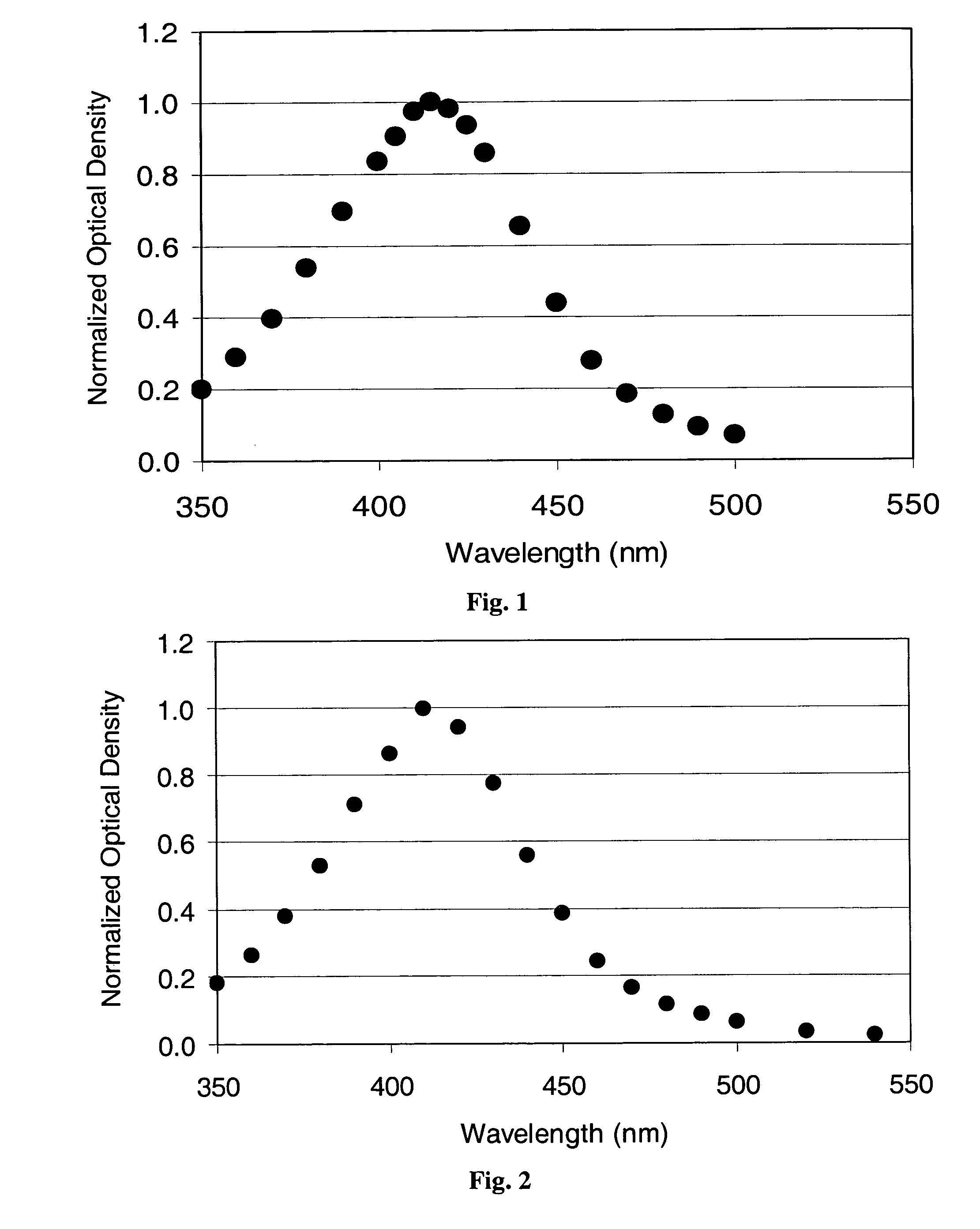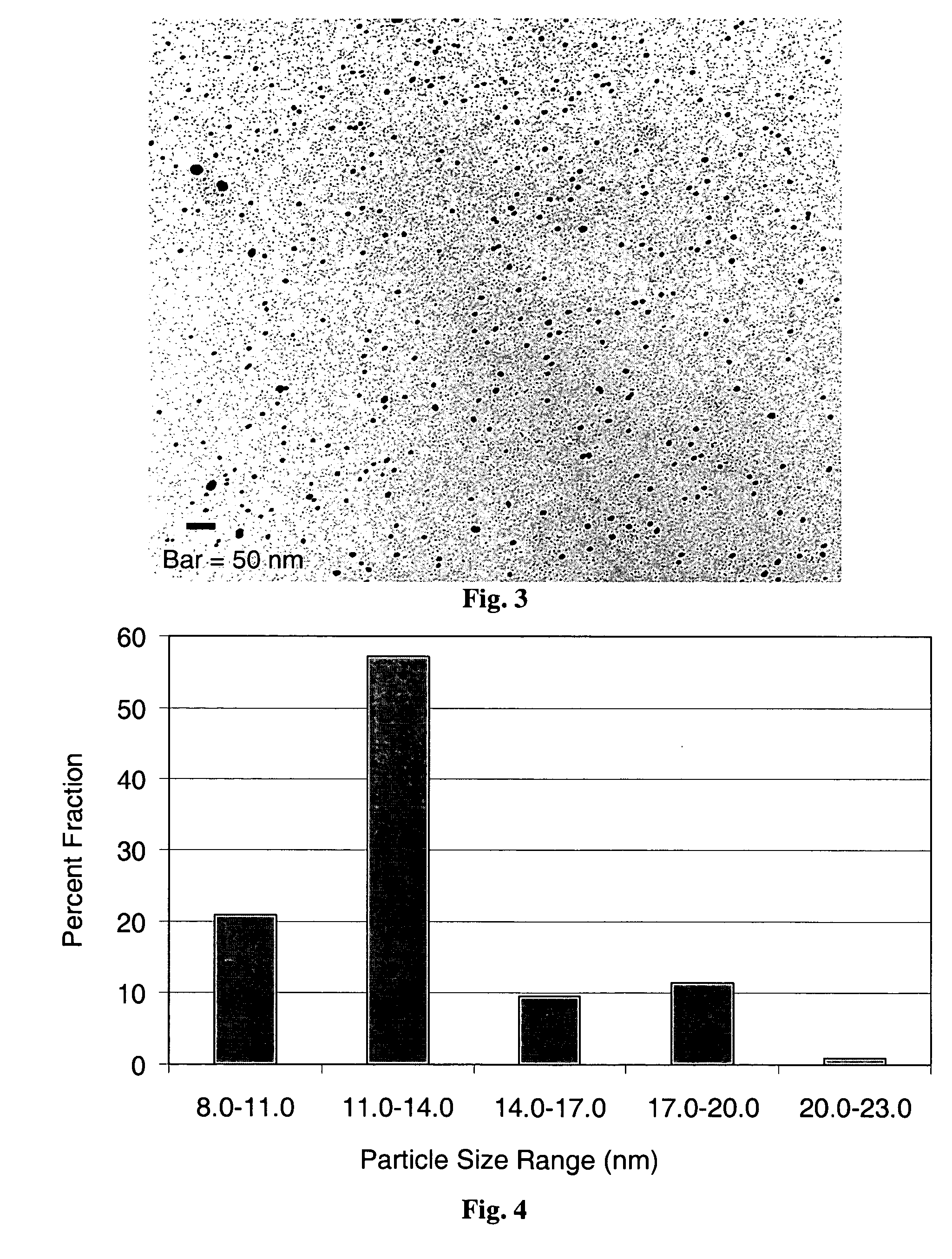Antimicrobial silver compositions
a technology of silver nanoparticles and compositions, which is applied in the field of antimicrobial compositions comprising silver nanoparticles, can solve the problems of inability to achieve uniform deposition of silver nanoparticles inside thin bore tubes, and difficulty in producing silver nanoparticles in non-aqueous medium, and achieve the effect of increasing the use of antimicrobial nanoparticles and being easy to dispers
- Summary
- Abstract
- Description
- Claims
- Application Information
AI Technical Summary
Benefits of technology
Problems solved by technology
Method used
Image
Examples
examples
Antimicrobial Device Examples A1-A37
example a1 cotton
Gauze
[0184] Dimethyl formamide (5 ml) was heated in beaker to ˜60C under stirring. After the stir bar was removed a 2″×2″ cotton gauze (Curity brand, The Kendall Company, Mansfield, Mass.) was placed in DMF to soak up all solvent. Silver nitrate solution (0.3 ml, 0.1 M) was pipetted over the gauze. Within a minute the gauze turned yellow. After 5 minutes, the beaker was removed from the hot plate and cooled to room temperature. The pale yellow colored gauze was thoroughly rinsed with de-ionized water, blotted and dried in oven at 40C.
TABLE 9Examples of Sustained Release of Silver from Bacterial Challenge TestAgainst Pseudomonas Aeruginosa ATCC 9027(Each challenge is 24 h)Table 3: % Kill Rate of Pseudomonas AeruginosaChallengeInoculationExampleExampleExampleExampleNo.size (cfu / ml)A15A16A14A131630010010010010024600100100100100387001001001001004300066.6710010010057000100010097.1468000100010010074000100Stopped1001008700010094.1457.149500010010010010900010010010011400010010010012800054...
example a2 cotton
Gauze
[0188] Gauze was treated exactly as in example A1 except the silver nitrate solution concentration was 1.0M.
PUM
| Property | Measurement | Unit |
|---|---|---|
| Volume | aaaaa | aaaaa |
| Fraction | aaaaa | aaaaa |
| Fraction | aaaaa | aaaaa |
Abstract
Description
Claims
Application Information
 Login to View More
Login to View More - R&D
- Intellectual Property
- Life Sciences
- Materials
- Tech Scout
- Unparalleled Data Quality
- Higher Quality Content
- 60% Fewer Hallucinations
Browse by: Latest US Patents, China's latest patents, Technical Efficacy Thesaurus, Application Domain, Technology Topic, Popular Technical Reports.
© 2025 PatSnap. All rights reserved.Legal|Privacy policy|Modern Slavery Act Transparency Statement|Sitemap|About US| Contact US: help@patsnap.com



